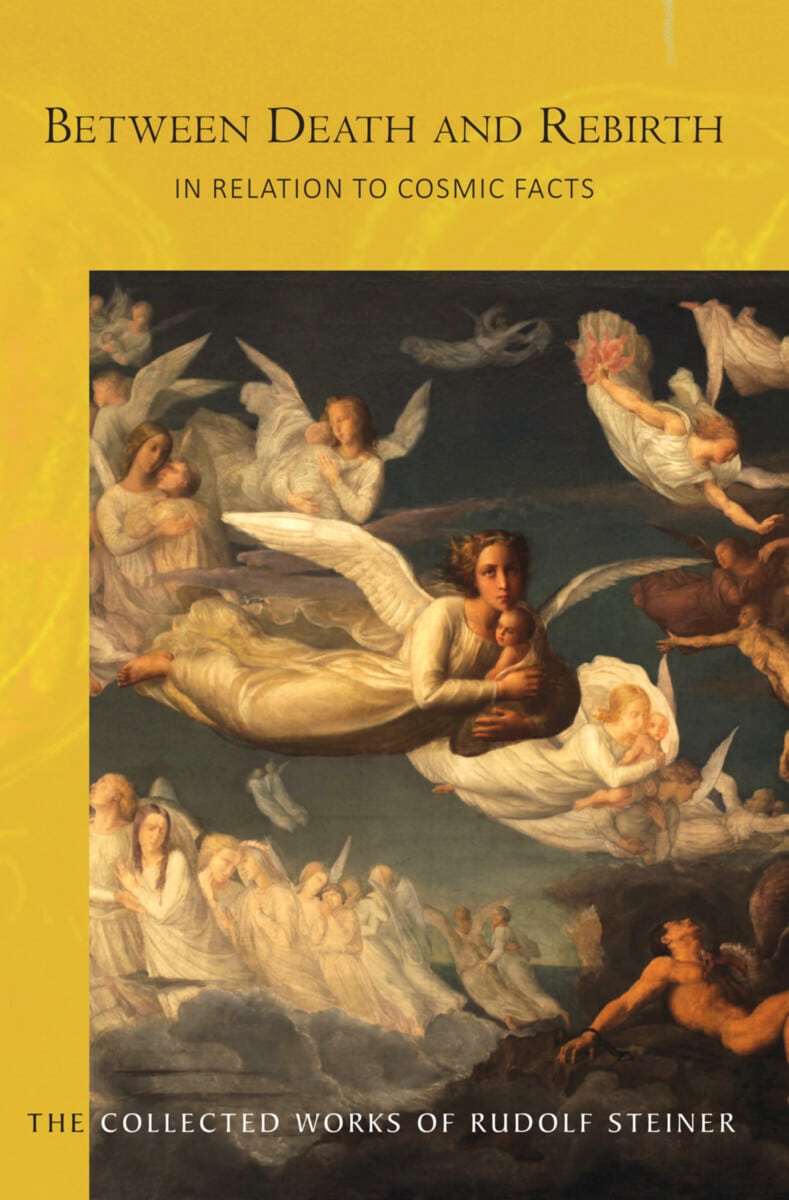Between Death and Rebirth: In Relation to Cosmic Facts
10 lectures, Berlin, November 5 – April 4, 1913 (CW 141)
In an absorbing series of lectures, Rudolf Steiner discloses factors in our life on Earth that will influence our experiences in the spiritual world after death—and, conversely, factors in the spiritual world that will affect our next life on Earth. He focuses on the period in the afterlife when an individual has been through kamaloka, the “purgatory” in which one’s soul is purified. Once the soul has been cleansed of its astral sheath, it becomes open to cosmic influences and expands into the planetary sphere, where it can begin preparation for reincarnation and a new human life on Earth.
Steiner addresses the vital relationship of the living to the dead—in particular, how those on Earth can influence the souls of those who have died. He also discusses sleep and death and our seven-year life cycles. In addition, he offers a “Christmas gift” in the form of a lecture on Christian Rosenkreutz and Gautama Buddha, ending with a grand picture of the Mystery of Golgotha—showing that Jesus Christ’s death on the cross only seemed to be a death, whereas in reality it enabled the momentous birth of the “Earth Soul.”
Long out of print, the freshly revised text in this new edition is complemented with an introduction, notes and appendices by Prof. Frederick Amrine and features an index.
This volume is a translation from German of Das Leben zwischen dem Tode und der neuen Geburt im Verhältnis zu den kosmischen Tatsachen (GA 141).
CONTENTS SYNOPSES:
Lecture 1, Nov. 5, 1912: All the forces of the soul must be activated to grasp the essence of Anthroposophy. Subjects must be studied from ever-new sides. Since the last third of the nineteenth century, the soul only needs to be duly prepared, and revelations will flow from the spiritual world.
Lecture 2, Nov. 20. 1912: Consciousness of the “I” acquired through contacts and collisions with the outer world and the body when waking from sleep. Between birth and death, human beings may reduce the value of their “I” by causing suffering to others.
Lecture 3, Dec. 3, 1912: Relationships established during earthly existence cannot initially be changed during life after death; power is gained to change conditions in later karma through any suffering caused by this realization. Those living on Earth are able to have a great influence on those who have died.
Lecture 4, Dec. 10, 1912: After death, human beings draw forces from the stellar world to the extent to which one developed moral and religious qualities during life on Earth.
Lecture 5, Dec. 22, 1912: This was a special lecture given “as a kind of Christmas gift” on the subject of Christian Rosenkreutz and Gautama Buddha—their missions and achievements in the spiritual history of humankind.
Lecture 6, Jan. 7, 1913: In our fifth post-Atlantean epoch, the sixth epoch is prepared in human souls by increasing our understanding of the Christ impulse and the mystery of the Holy Grail. The latter is connected with the mission of Buddha in the Mars sphere (mentioned in the previous lecture).
Lecture 7, Jan. 14, 1913: Cyclic seven-year periods in life. Coming of the second teeth marks the culmination of the formative process that works from within human beings. But growth continues until stopped by forces working from outside.
Lecture 8, Feb. 11, 1913: The greatest mysteries of existence are within us. The thoughts conceived by divine-spiritual beings in the past live on in the present mineral, plant, and animal kingdoms, just as our memory pictures continue into our present life.
Lecture 9, Mar. 4, 1913: Spiritual investigation discloses that the suprasensory forces needed by human beings to mold their body and destiny are received from beings of the hierarchies they contact between death and rebirth.
Lecture 10, Apr. 1, 1913: Reference to the book Theosophy, chapter 3, on the soul world, the soul in the soul world after death, the spirit land, the spirit in the spirit land after death.
About the Author
Rudolf Steiner (1861–1925) was born in the small village of Kraljevec, Austro-Hungarian Empire (now in Croatia), where he grew up. As a young man, he lived in Weimar and Berlin, where he became a well-published scientific, literary, and philosophical scholar, known especially for his work with Goethe’s scientific writings. At the beginning of the twentieth century, he began to develop his early philosophical principles into an approach to systematic research into psychological and spiritual phenomena. Formally beginning his spiritual teaching career under the auspices of the Theosophical Society, Steiner came to use the term Anthroposophy (and spiritual science) for his philosophy, spiritual research, and findings. The influence of Steiner’s multifaceted genius has led to innovative and holistic approaches in medicine, various therapies, philosophy, religious renewal, Waldorf education, education for special needs, threefold economics, biodynamic agriculture, Goethean science, architecture, and the arts of drama, speech, and eurythmy. In 1924, Rudolf Steiner founded the General Anthroposophical Society, which today has branches throughout the world. He died in Dornach, Switzerland.











Reviews
There are no reviews yet